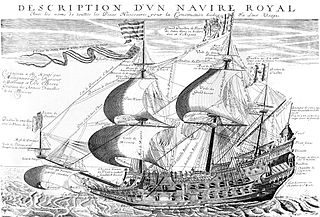
The Latin cogito, ergo sum, usually translated into English as "I think, therefore I am", is the "first principle" of René Descartes's philosophy. He originally published it in French as je pense, donc je suis in his 1637 Discourse on the Method, so as to reach a wider audience than Latin would have allowed. It later appeared in Latin in his Principles of Philosophy, and a similar phrase also featured prominently in his Meditations on First Philosophy. The dictum is also sometimes referred to as the cogito. As Descartes explained in a margin note, "we cannot doubt of our existence while we doubt." In the posthumously published The Search for Truth by Natural Light, he expressed this insight as dubito, ergo sum, vel, quod idem est, cogito, ergo sum. Antoine Léonard Thomas, in a 1765 essay in honor of Descartes presented it as dubito, ergo cogito, ergo sum.

René Descartes was a French philosopher, scientist, and mathematician, widely considered a seminal figure in the emergence of modern philosophy and science. Mathematics was central to his method of inquiry, and he connected the previously separate fields of geometry and algebra into analytic geometry. Descartes spent much of his working life in the Dutch Republic, initially serving the Dutch States Army, later becoming a central intellectual of the Dutch Golden Age. Although he served a Protestant state and was later counted as a deist by critics, Descartes was Roman Catholic.

Frans van Schooten Jr. also rendered as Franciscus van Schooten was a Dutch mathematician who is most known for popularizing the analytic geometry of René Descartes.

Discourse on the Method of Rightly Conducting One's Reason and of Seeking Truth in the Sciences is a philosophical and autobiographical treatise published by René Descartes in 1637. It is best known as the source of the famous quotation "Je pense, donc je suis", which occurs in Part IV of the work. A similar argument, without this precise wording, is found in Meditations on First Philosophy (1641), and a Latin version of the same statement Cogito, ergo sum is found in Principles of Philosophy (1644).

Gilles Personne de Roberval, French mathematician, was born at Roberval near Beauvais, France. His name was originally Gilles Personne or Gilles Personier, with Roberval the place of his birth.
This article contains information about the literary events and publications of 1647.

La Géométrie was published in 1637 as an appendix to Discours de la méthode, written by René Descartes. In the Discourse, Descartes presents his method for obtaining clarity on any subject. La Géométrie and two other appendices, also by Descartes, La Dioptrique (Optics) and Les Météores (Meteorology), were published with the Discourse to give examples of the kinds of successes he had achieved following his method.

Egmond is a former municipality in the north-western Netherlands, in the province of North Holland. In 2001, it was merged with the municipalities of Schoorl and Bergen to form the municipality of Bergen. The three main villages in the former municipality are Egmond aan den Hoef, Egmond aan Zee and Egmond-Binnen. The place gave its name to the House of Egmond, who became the powerful protectors of Egmond Abbey, founded in the 9th-century in Egmond-Binnen, and who built their residence (hoeve/hoef) in Egmond aan den Hoef.
The year 1637 in science and technology involved some significant events.

JohannesHudde was a burgomaster (mayor) of Amsterdam between 1672 – 1703, a mathematician and governor of the Dutch East India Company.
René Le Bossu or le Bossu was a French literary critic.

Principles of Philosophy is a book by René Descartes. In essence, it is a synthesis of the Discourse on Method and Meditations on First Philosophy. It was written in Latin, published in 1644 and dedicated to Elisabeth of Bohemia, with whom Descartes had a long-standing friendship. A French version followed in 1647.
Florimond de Beaune was a French jurist and mathematician, and an early follower of René Descartes. R. Taton calls him "a typical example of the erudite amateurs" active in 17th-century science.

Ignace-Gaston Pardies was a French Catholic Jesuit priest and scientist.
In mathematics, Hudde's rules are two properties of polynomial roots described by Johann Hudde.
The year 1570 in science and technology included a number of events, some of which are listed here.

André Warusfel was a French mathematician and an alumnus of the École Normale Supérieure.

Georges Fournier was a French Jesuit priest, geographer and mathematician.
This is a timeline of philosophy in the 17th century.

The Search for Truth by Natural Light is an unfinished philosophical dialogue by René Descartes “set in the courtly culture of the ‘honnête homme’ and ‘curiosité’.” It was written in French but first published in Dutch translation in a collection of letters from Descartes by JH Glazemaker, and then in a Latin translation in the Opuscola posthuma, physica & mathematica. The original French was lost around 1700 but a partial copy was discovered in G.W. Leibniz's papers in Hanover in 1908 and published in the Adam-Tannery edition of Descartes's works and correspondence. A definitive edition, containing the partial French text plus the fuller Dutch and Latin translations on facing pages was published in 2002. The opening passage "is a helpful commentary on the argument of Articles 74-78" of The Passions of the Soul.










